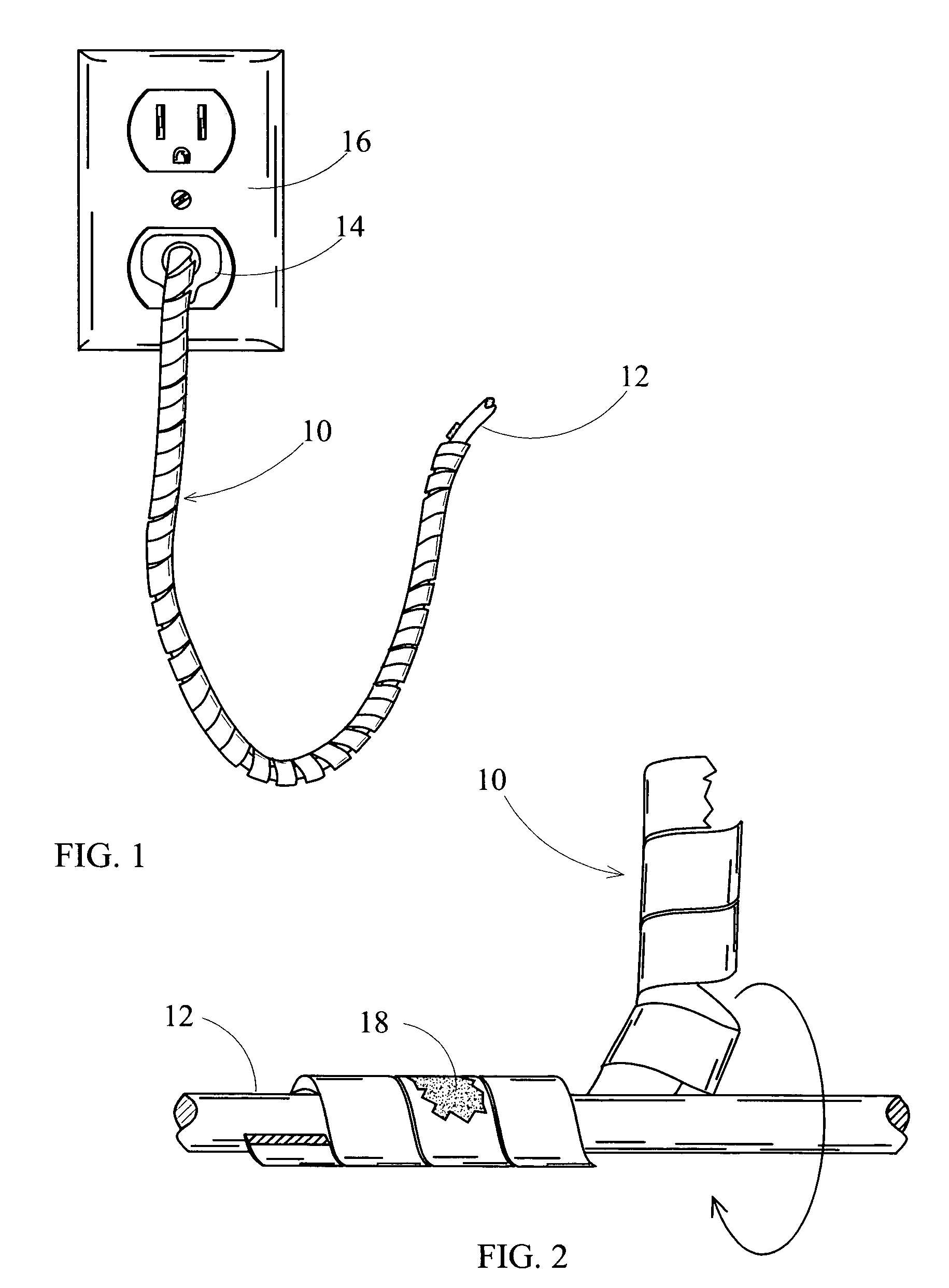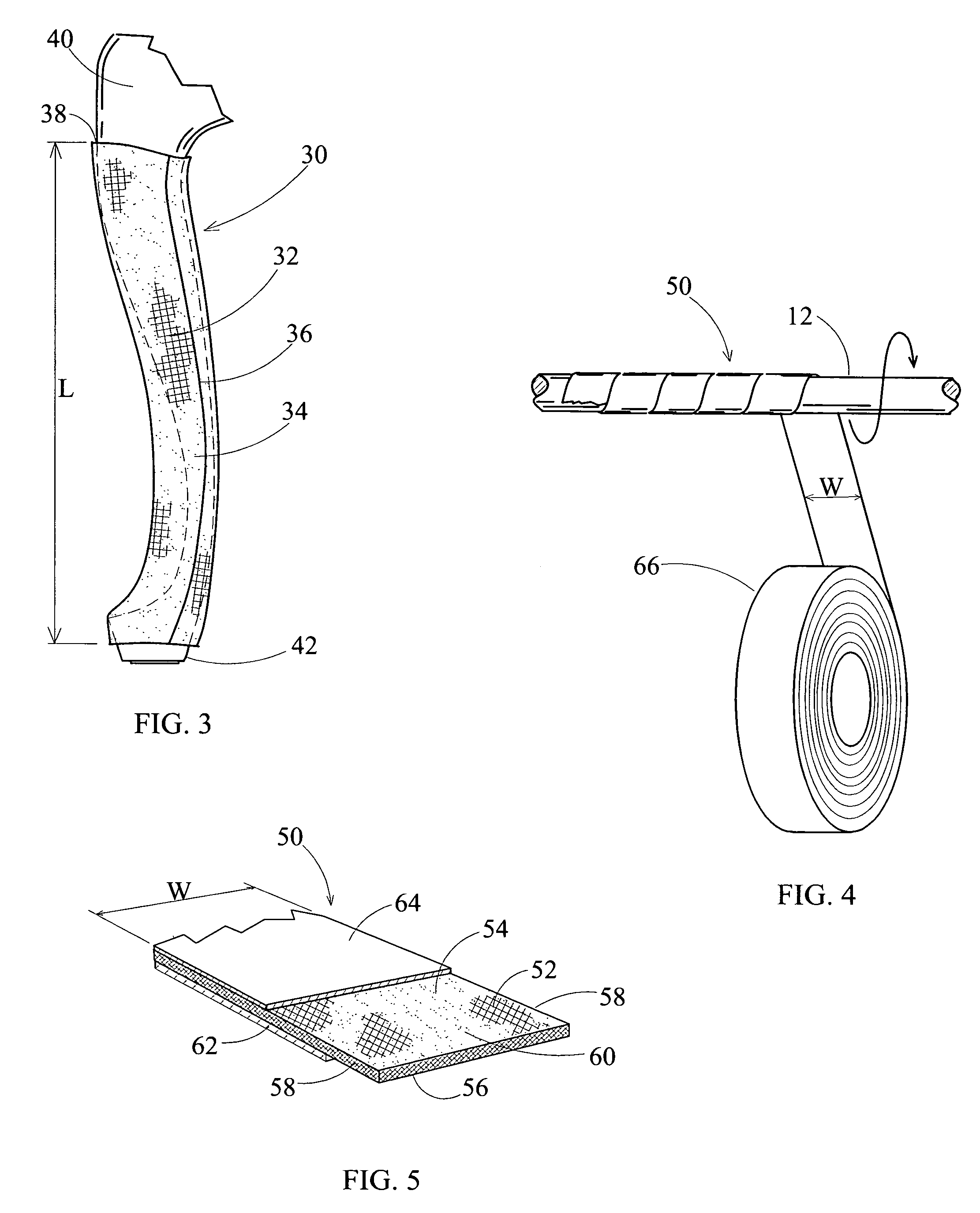Pet deterrent device
a technology for deterrent devices and pets, which is applied in the field of pet deterrent devices, can solve the problems that the security of all-important household items can be an insurmountable task, and achieve the effect of protecting these household items from damage and alleviating the owner's potential discontent with the family p
- Summary
- Abstract
- Description
- Claims
- Application Information
AI Technical Summary
Benefits of technology
Problems solved by technology
Method used
Image
Examples
example 1
[0029]In this example, a pet repellent was used that was a capsaicin extract available under the tradename 1 MILLION SCOVILLE PEPPER EXTRACT™ from Ashley food Company, Inc., Sudbury, Mass. Initially, 0.25 teaspoon of the pepper extract was mixed with 2.25 teaspoons of Part A (phenylisocyanate) of the EASYFLO™ polyurethane thermoplastic compound. Next, 2.25 teaspoons of Part B (polyol) was admixed into the phenylisocyanate and pepper extract mixture yielding a 5.5% pepper extract:polyurethane ratio, and poured into a bone-shaped mold and allowed to cure. As a control, other similar bone-shaped products were made using the EASYFLO™ two part polyurethane compound which were void of any pet deterrent substances. Subsequent tests on pets such as dogs revealed that pets consistently rejected the bone-shaped products that had pepper extract impregnated therein and readily accepted similarly manufactured bone-shaped products that had no pet deterrent substance impregnated therein. Even seve...
example 2
[0030]The pet repellent defined by the capsaicin extract, 1 MILLION SCOVILLE PEPPER EXTRACT™ was again used to create several test specimens in a manner similar to the test bones as described in EXAMPLE 1, yet having higher concentrations of pepper extract impregnated therein. One set of test bones were constructed using 0.5 teaspoons of the extract which was admixed into the two part polyurethane EASYFLO™ composition in order to yield a proportion of pepper extract:polyurethane ratio of approximately 11%. Another set of test bones were constructed using 1.0 teaspoons of the pepper extract in order to yield a proportion of the pepper extract:polyurethane ratio of approximately 22%. Immediately following de-mold of the test bones comprised of approximately 11% pepper extract:polyurethane ratio, it was found that some of the extract perspired from the hardened polyurethane bone thus showing that maximum saturation of the pepper extract in the polyurethane matrix had been exceeded. Sim...
PUM
 Login to View More
Login to View More Abstract
Description
Claims
Application Information
 Login to View More
Login to View More - R&D
- Intellectual Property
- Life Sciences
- Materials
- Tech Scout
- Unparalleled Data Quality
- Higher Quality Content
- 60% Fewer Hallucinations
Browse by: Latest US Patents, China's latest patents, Technical Efficacy Thesaurus, Application Domain, Technology Topic, Popular Technical Reports.
© 2025 PatSnap. All rights reserved.Legal|Privacy policy|Modern Slavery Act Transparency Statement|Sitemap|About US| Contact US: help@patsnap.com



